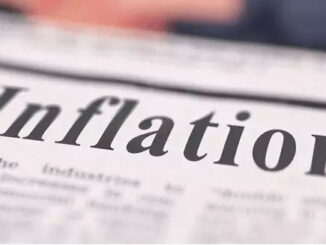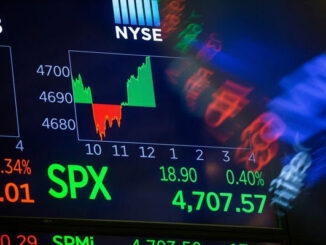
Four decades of history say it’s not over until the 2-year yield overshoots the EFFR. It has undershot for a year, and inflation is taking off again.
By Wolf Richter for WOLF STREET.
Inflation surprised in 2023 with its sharp decline, driven by the collapse in energy prices and the drop in durable goods prices. Both of them have come off huge price spikes since mid-2022, pulling down overall CPI inflation from 9.0% in June 2022 to 3.1% in January 2024. But services inflation has remained high and accelerated in late 2023, which was not surprising, and then on top of this increase, it leaped in January by an annualized rate of 8.2%.
The Producer Price Index (PPI), which shows inflationary pressures deeper in the economic machinery, dished up another nasty surprise, with the Services PPI leaping by 7.1% annualized, and with the Finished Goods PPI jumping by 4% annualized in January.
The PCE price index for January hasn’t been released yet, but December’s PCE price index for core services accelerated to 4.0% annualized. So given the surge in the CPI for core services in January, we expect another nasty surprise, so to speak, in the core PCE price index for services.
Energy prices cannot plunge forever. Crude oil prices and gasoline have been rising recently; WTI is back to nearly $80. And durable goods prices cannot drop forever either, though they can drop for a while longer, given how high they’d spiked. If energy and durable goods prices just stall, overall inflation will accelerate faster because those two big categories are then no longer a counterweight to services. If energy prices and durable goods prices begin to rise again, then all bets are off.
So now we’re contemplating a scenario where inflation is accelerating again. When we look back at 2023 in a few months, we may see that it was another head fake, for which inflation is infamous.
And we have an indicator that this may be the case – the 2-year Treasury yield compared to the Effective Federal Funds Rate (the EFFR is the rate the Fed brackets with its headline policy rate currently between 5.25% and 5.5%).
The 2-year yield hasn’t overshot yet.
The 2-year yield generally rises before the Fed starts hiking rates. It does so in anticipation because the Fed communicates the rate hikes well in advance, and markets, if they’re not in denial, are beginning to price in those rate hikes ahead of the rate hikes. The 2-year yield reacts first.
During the current tightening cycle, the 2-year yield started rising in October 2021, about five months before the first rate hike. And then it stays ahead of the rate hikes. It has done that for decades. And since it runs ahead of the rate hikes, when the Fed stops hiking, the 2-year yield overshoots between a little and a lot. It has overshot during every rate hike cycle over the past four decades – except in this rate-hike cycle.
But in this cycle, the 2-year yield undershot. In November 2022, the 2-year yield went into denial and started dropping, even as the Fed would hike four more times. By December 2022, when the Fed hiked, the 2-year yield (red) fell below the EFFR (blue) and it has stayed below the EFFR ever since.
During the 2018 rate hikes, the 2-year yield overshot to 3%, behaving in the classic manner. The Fed hiked a final time in December, and the EFFR maxed out at around 2.4%. The 2-year yield had overshot by 60 basis points, and that did the trick:
Obviously, the 2-year yield is not some ghost that does what it wants; it’s an index that tracks the market for Treasury securities, which is a huge global market where humans and algos trade and bet. And the classic overshoot of the 2-year yield with regards to the EFFR was a sign that these humans and algos took the Fed seriously, and didn’t blow it off, and didn’t go into denial.
The fact that the 2-year yield undershot since December 2022 is a sign that these humans and algos have blown off the Fed, have not taken it seriously, and have been in denial about inflation and rate hikes.
This shows up in a stunning loosening of the financial conditions, with spreads narrowing for risky debt and with longer-term yields falling, and these loosening financial conditions are part of the fuel that is now driving inflation higher.
In the past, it wasn’t over until the Fat Lady sang.
By tightening its monetary policy, the Fed attempts to tighten financial conditions in the markets, and tighter financial conditions make it harder for companies and consumers to borrow, which is supposed to produce a small-ish slowdown in demand, which is supposed to whittle away at the pricing power of businesses, and make consumers more careful about spending money, and slowly, this is supposed to get inflation back into the bottle.
But financial conditions have dramatically loosened in 2023, and inflation is now taking off again.
And the undershoot of the 2-year yield seems to tell us that higher-for-longer inflation and rates won’t be over until the Fat Lady sings, and the Fat Lady is the 2-year yield, and it sings when it overshoots the EFFR.
And if it overshoots the EFFR it’s because markets and humans take the Fed seriously, and therefore financial conditions tighten and play their magic on demand. But it didn’t happen this time.
So now we have the suspicion that inflation won’t actually go back into the bottle until after the 2-year yield overshoots the EFFR, and the Fed may have to hike rates further because the financial conditions have loosened so much, as markets have blown off the Fed, and inflation is taking off again.
There is another factor here that is fueling inflation: the huge and reckless government deficit spending, where fiscal policy is running effectively against the Fed’s monetary policy, which is making the enterprise of getting inflation back into the bottle even more difficult.
The prior instances when the Fat Lady sang.
We have already seen the overshoot of the 2018 rate hikes in the chart above. So here are the prior two rate hike cycles in the late 1990s and 2005-2006. In both instances, the 2-year yield overshot the EFFR:
And here are the 1987-1989 rate hikes and the 1994 rate hikes. In 1994, the 2-year yield overshot by a huge margin (180 basis points), meaning that the markets took inflation and the Fed very seriously. In 1987, the 2-year yield overshot also bigly. But in 1989, at the peak of the rate-hike cycle, it matched the EFFR at 9.9%:
Do we hafta wait until the Fat Lady sings?
We’re not predicting the course of inflation. That’s a fool’s errand. But we know what is currently going on: Financial conditions have become loosey-goosey, which nurtures inflation. Government deficit spending is gigantic and also nurtures inflation. The demand by consumers and businesses is robust, and incomes started rising above the rate of CPI inflation in 2023. And there is just not a whole lot outside of the Fed’s short-term rates that is putting downward pressure on inflation.
We suspect that inflation and higher policy rates won’t be over until the Fat Lady sings. And this opera could last for a while as markets have been blowing off the Fed and are not doing what the Fed needs them to do: tighten financial conditions to bring down inflation.



